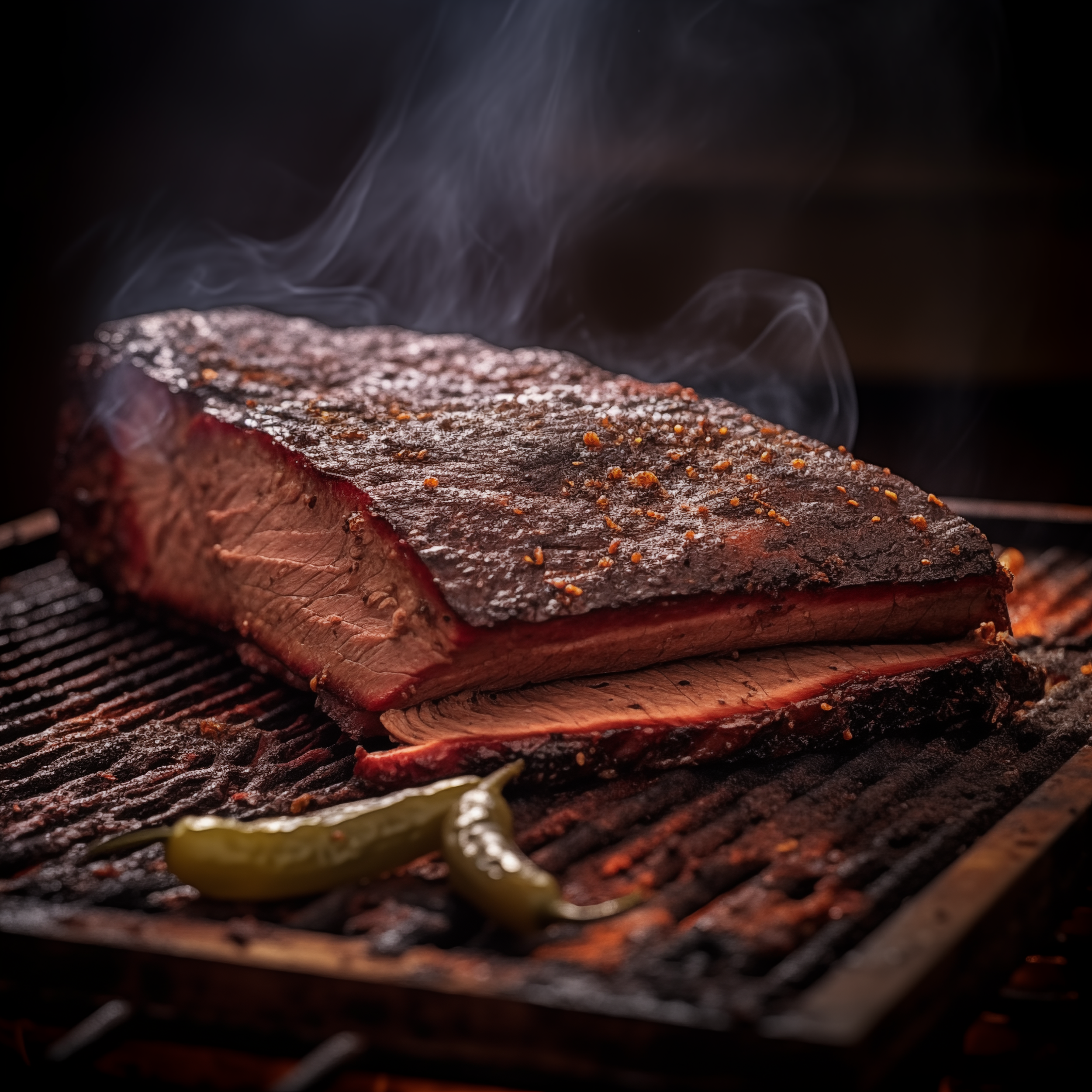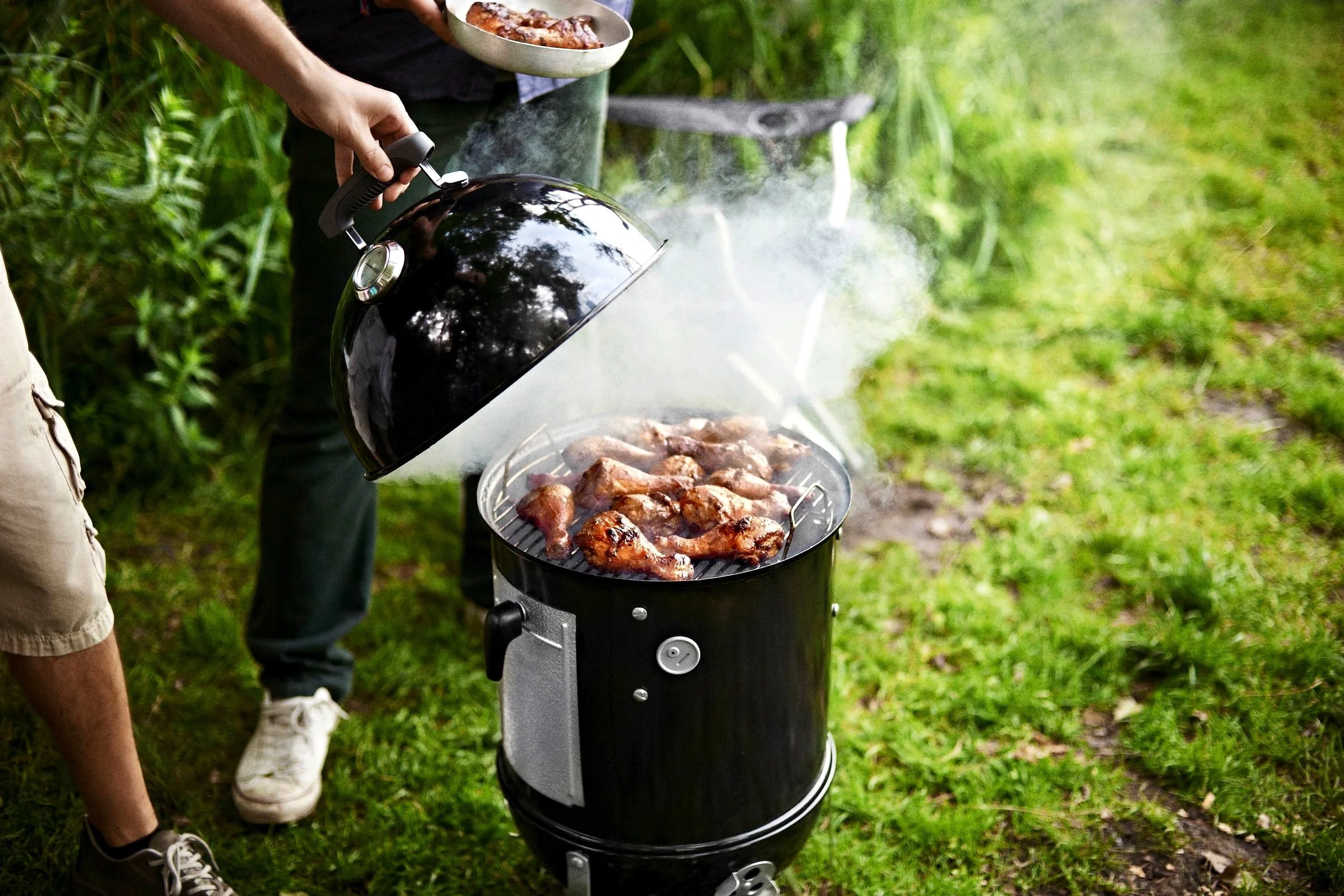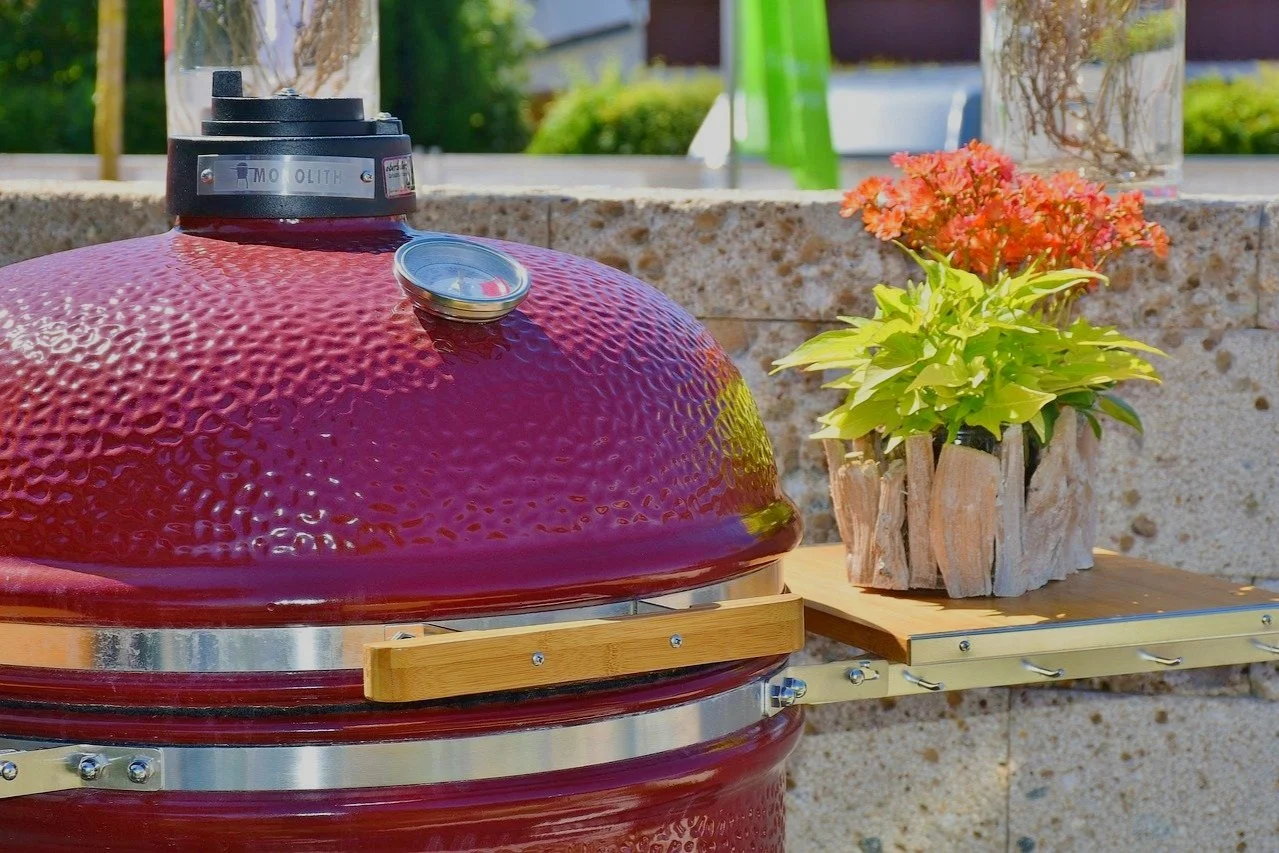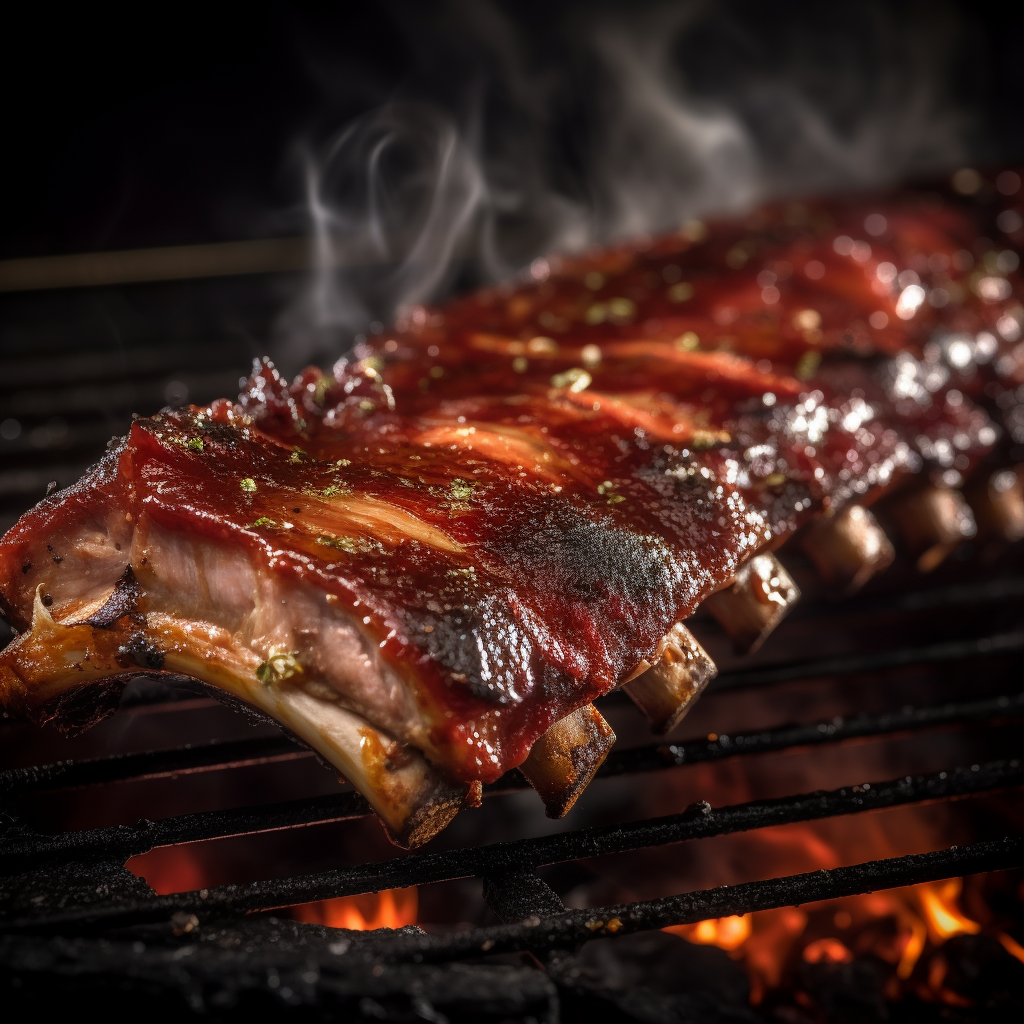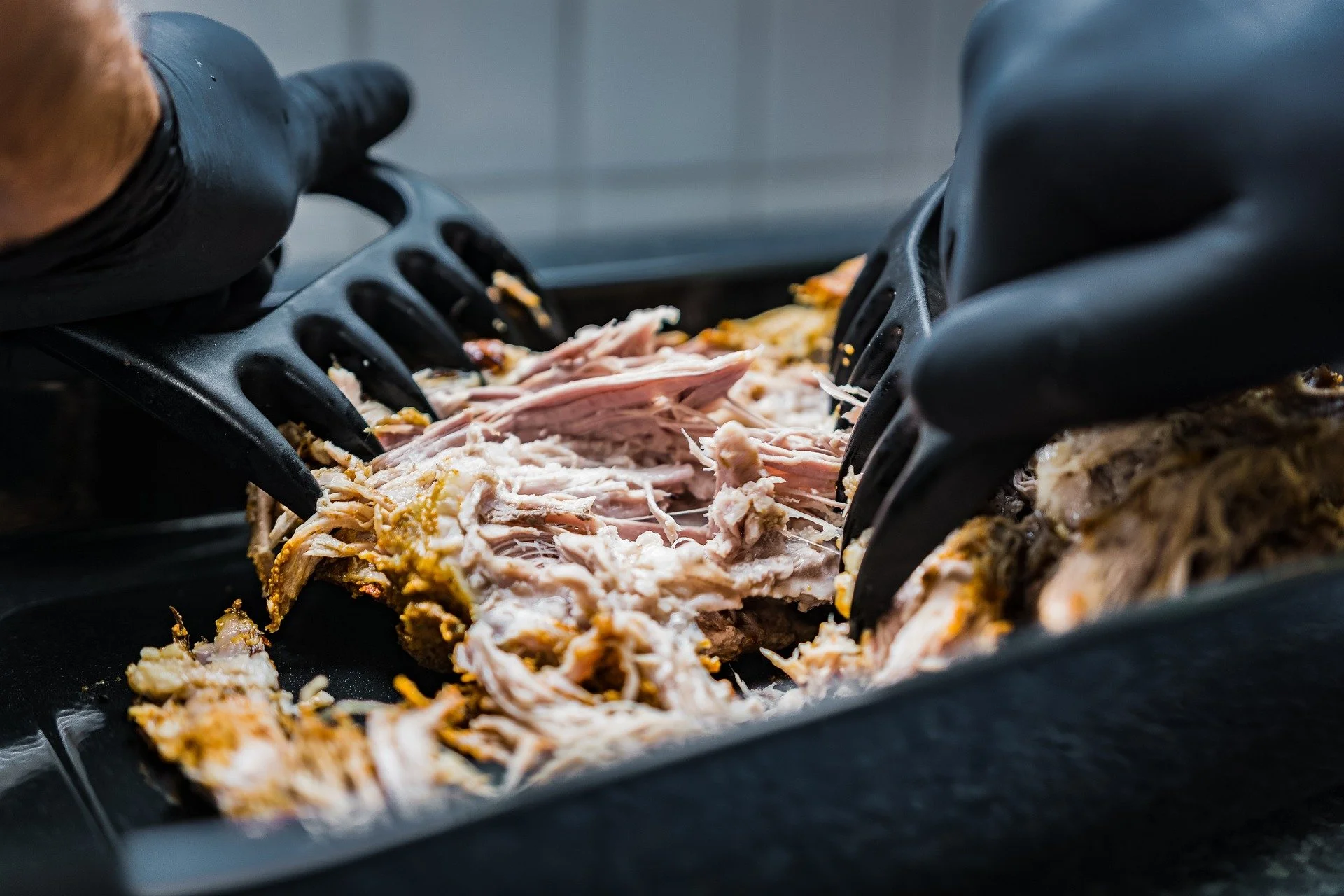Mastering the Art of Low and Slow BBQ: A Beginners Guide
Introduction
Low and slow cooking, a revered culinary technique, involves smoking meats at low temperatures over an extended period. Unlike traditional hot and fast methods, this approach requires a combination of patience and precision. This guide delves into the benefits and intricacies of low and slow BBQ, providing a broad overview to improve your understanding, get you excited and hopefully elevate your gastronomic prowess 🔥🔥🔥
Why Bother? What are the Benefits of Low and Slow Cooking
Desired Doneness
Low and slow cooking ensures perfection from edge to centre. Meats reach their ideal internal temperature without the risk of overcooking, resulting in uniformly cooked, juicy cuts.
Better Flavour
The slow infusion of smoke and gentle cooking process enhances natural Flavours. This method turns each bite into a celebration of taste, capturing the essence of the chosen wood and the meat itself.
Smokey Essence
Unlike quick grilling, low and slow cooking imparts a rich smokiness that elevates your dishes. This is not merely a cooking method; it's a journey into the heart of flavour, creating a depth that cannot be replicated by other techniques.
Improved Tenderness
Low temperatures break down collagen in meats, rendering them tender and succulent. Tough cuts become melt-in-your-mouth delicacies, showcasing the transformative power of slow smoking.
Longer Shelf Life
Controlled cooking and preservation through smoke make low and slow-cooked meats last longer. It's not just a meal; it's a carefully crafted culinary experience that stands the test of time.
Choose Your BBQ Sidekick: Factors in Selecting the Right Smoker
Choosing the right smoker is crucial for your low and slow journey and the right fit can make of break your BBQ experience. Consider your grilling habits… Are you a weekend warrior or a weekday barbecue enthusiast? The ideal smoker complements your routine, making your BBQ sessions enjoyable and stress-free. Below are the key considerations should influence your choice of smoker:
Budget
The financial aspect is often a primary consideration. Smokers come in a range of price points. From wallet-friendly kettles to offset champions, you can smoke up a storm without burning a hole in your pocket.
Space
The available space, whether you have a backyard or on a balcony, will dictate the size and type of smoker that is practical for you.
Fuel Type
Fuel choice matters: Wood, charcoal, or electric—each has its appeal. Look beyond flavour and consider practicality. Does it match your taste preferences and align with the convenience you want in your BBQ process?
Ease of Use
When it comes to choosing your smoker, there are really two types. On one hand, you've got the 'Set-it-and-Forget-it' types—reliable and low-maintenance, perfect for those who prefer a hands-off approach. On the other hand, there are the 'Attention-Seeker' smoker types, requiring a bit more TLC, where your watchful eye and hands-on finesse come into play.
Cooking Capacity
Think about how much grub you plan to smoke at one go. Are you the go-big-or-go-home type, or are you going to be playing chef for a big crowd? It's all about matching your smoker size to your feast ambitions! You can usually compare the size of the cooking area in square inches on manufacturer websites, and many will provide guidance on of how many chickens or poke butts you can fit in one go.
Think versatility
Some smokers are all-in-ones, perfect for high temperature grilling, smoking, and even baking. If you're into multi-tasking then this will potentially affect you choice of smoker in a big way. But if you're a stick-to-the-classics kind of griller, a more specialized and dedicated smoker might be more your flavour. It's about finding your BBQ sweet spot.
Maintenance:
Boring but important. Considerations about cleaning and maintenance requirements of your smoker are essential. Some smokers demand a heck of a lot more upkeep than others, impacting the overall convenience of use, and potentially how often you will whip that BBQ cover off!
Unveiling the BBQ Arsenal: Smoker Types
Choosing a smoker is key to your low and slow journey. In this brief guide, meet the main types—each with distinct idiosyncrasies. From classic offset smokers to fuss-free pellet ones, let's streamline your path to the perfect smoke.
Kettle BBQ Smoker
A classic choice, versatile and affordable, although not technically a smoker. The kettle BBQ, set up correctly using the snake or minion method uses indirect heat for slow cooking, making it an excellent entry point for beginners. Its simplicity allows for experimentation, making it a favourite for those new to the low and slow world.
🔥 Fuel: Charcoal is the primary fuel source, placed in the bottom of the kettle. Wood chips or chunks can be added during the cooking process for the smoky flavour.
Offset Smoker
Known for large cooking chambers and separate fireboxes, offset smokers provide a consistent flow of smoke over the meat. They're favoured for their traditional smoking experience, offering a more hands-on approach and a deep connection to BBQ heritage.
🔥 Fuel: Wood logs or chunks are commonly used in the firebox for a traditional smoky flavour. Some may use charcoal as a base fuel with wood chunks for flavour.
Bullet or Vertical Smoker
Compact and efficient, bullet smokers are ideal for those with limited space. They maintain a steady temperature and are excellent for smaller cuts. Their vertical design allows for even smoking, and they are known for ease of use.
🔥 Fuel: Charcoal is the primary fuel source, providing consistent heat throughout the cooking chamber. Wood chunks or chips can be added to provide the smokiness.
Pellet Smoker
Modern and user-friendly, pellet smokers use wood pellets to produce consistent heat and smoke. They are known for convenience and precise temperature control, offering a set-it-and-forget-it experience suitable for busy individuals.
🔥 Fuel: Electricity powers the heating element, and Wood pellets, usually made from compressed hardwood sawdust, provide both heat and flavour.
Kamado
These egg-shaped ceramic smokers offer excellent heat retention and versatility. They can sear, smoke, and bake, making them a favourite among BBQ enthusiasts seeking an all-in-one solution.
🔥 Fuel: Lump charcoal is the go-to fuel, known for its natural and pure composition. Use wood chips or chunks enhance the smoky flavour.
Gas Grill
Convenient and easy to use, gas smokers are perfect for those who value simplicity. They offer precise temperature control without the hassle of charcoal. While some argue it lacks the authenticity of charcoal, gas provides a hassle-free smoking experience.
🔥 Fuel: Propane gas is used for heat, and wood chips or chunks on a smoker box provide the smoky flavour.
Basics of Low and Slow Cooking: A whistle-stop tour
In this section, we'll briskly journey through the essentials, uncovering the art and science that transforms raw cuts into succulent masterpieces. Ready to explore the core principles of the low and slow technique. Read on.
Importance of Temperature Control 🔥
In the realm of low and slow cooking, the importance of temperature control cannot be overstated. It serves as the linchpin, dictating the outcome of your culinary creations.
Here's why it matters:
Consistency: Maintaining a consistent temperature ensures even cooking throughout, preventing undercooked or overcooked spots.
Tenderness: The slow breakdown of collagen in meats at lower temperatures contributes to tenderness. Controlling temperature allows this process to occur gradually.
Flavour Absorption: The controlled environment allows meats to absorb the smoky essence and Flavors of the chosen wood, enhancing taste.
The magic of low and slow cooking lies in the gentle, prolonged exposure to controlled temperatures. Whether you're coaxing tenderness from ribs or infusing smokiness into brisket, the ability to regulate heat is paramount.
Regulating Airflow 🔥
You maintain consistent temperatures by regulating the airflow in your smoker. Adjust the smoker’s vents and dampers to control the oxygen supply, influencing the combustion rate of your fuel source which alters the temperature. More oxygen increases heat, while less cools the smoker. You have to find the right balance to ensure a steady cooking environment during your cooks.
With the exception of the fire-and -forget smoker types such as gas, all types of smokers will have both intake vents and exhaust vents:
Intake Vents: Usually located at the bottom of the smoker, these vents allow air to enter. Opening them increases oxygen supply, raising the temperature. Closing them restricts airflow, lowering the temperature.
Exhaust Vents or Chimney: Positioned at the top of the smoker, the exhaust vent expels hot air and smoke. Adjusting the chimney regulates the rate at which heat and smoke exit. A wide-open chimney promotes a hotter fire, while a partially closed one cools the smoker.
Keeping the temperature Stable 💦
Introduce a water pan to your smoker for added moisture. This prevents meats from drying out during the extended cooking process. The water pan also serves as a heat sink, stabilising temperatures and creating a forgiving cooking environment. Refill the pan as needed throughout the smoking process.
Mastering Smoke Regulation 🌪️
Smoke regulation is crucial during the cook. It ensures precise flavour infusion, and avoids bitter residues. Master it, and your low and slow creations become a symphony of taste and aroma.
Achieving clean, thin blue smoke is what your looking for to get optimal flavour. Here's how:
Wood Quality: Use seasoned wood for smoking. Green or wet wood can produce heavy, acrid smoke which will impart a bitter flavour to your cooking.
Airflow Control: Adjust vents to control the amount of oxygen. A well-ventilated fire produces cleaner smoke.
Clean Burning Fire: Ensure your fire is clean burning. Incomplete combustion results in thick, white smoke. Don’t rush; Allow your fire to establish before introducing the meat.
Ideal Temperatures and Doneness 🔥
To craft the perfect barbecue, understanding the ideal smoking temperatures and optimal doneness for your meats is key. As a rule, for most cuts you will need to keep your smoker temperatures stable between 110°C (Minimum) and 130°C (Maximum). Each individual cut of meat needs to be treated differently for the perfect balance of tenderness and flavour absorption. As a starting point below are guidelines on the optimal internal temperatures for three of the classics:
Pork Shoulder/Pork Butt: Once the internal temperature hits 90°C - 96°C (195°F - 205°F) your pork will pull-apart and have a beautiful blend of bark and tenderness.
Brisket: Aim for an internal temperature of 93°C - 96°C (200°F - 205°F) to achieve a gorgeously rendered fat cap and a memorable bark.
Pork Ribs: Shoot for 88°C - 95°C Internal Temperature (190°F - 203°F). They should exhibit a satisfying bend without falling apart.
Bring on the flavour: Brining Dry Rubs & Spritzing 💦
When it comes to elevating your barbecue game, two techniques stand out: brining and dry rubs. These culinary manoeuvres can transform your meats into flavour-packed masterpieces.
Brining: This involves soaking your meat in a solution of water, salt, sugar, and sometimes additional herbs or spices. The brine works its magic by tenderising the meat and infusing it with moisture. This works particularly well for larger cuts like pork shoulder. Depending on the meat's thickness, brining times can vary from a few hours to overnight.
Dry Rubs: A mixture of various spices, herbs, sugars, and salts applied directly to the meat's surface before cooking. During the cooking process they create a flavourful crust that enhances the taste of your meat. The beauty of dry rubs lies in customisation. Experiment with different spices and quantities to tailor the rub to your taste preferences.
Spritzing: This involves gently misting your meat with a flavourful liquid during the smoking process. As meats cook, they can lose moisture. Spritzing with a concoction of water, fruit juices, cider, or even beer helps maintain optimal moisture levels, preventing dryness while also creating an additional layer of flavour within the bark.
Where to Start: The Low and Slow Classics
So, you've got your smoker, and the scent of low and slow delights is calling your name. Where do you start on this flavourful journey? Below are a few of the classics to kickstart your smoking adventures.
Pork Ribs (Difficulty: Beginner)
Achieve rib perfection with low and slow smoking. The slow process allows flavours to penetrate the meat, resulting in ribs that fall off the bone. Start by removing the membrane, apply a balanced rub, and let the ribs absorb the smoky goodness. Whether using the 3-2-1 method or a traditional approach, low and slow ensures ribs with a perfect bite and a flavourful crust.
Pork Shoulder (Butt) (Difficulty: Intermediate)
Perfect for pulled pork, pork shoulder stands out under the gentle heat of low and slow smoking. Start with a well-trimmed pork shoulder with or without bone, apply a flavourful rub, and let it smoke until it reaches the desired tenderness. The result is melt-in-your-mouth pulled pork that captures the essence of slow cooking.
Whole Brisket (Difficulty: Advanced)
Considered the holy grail of BBQ, brisket requires patience and precision. Smoking this cut low and slow transforms it into a tender, flavourful masterpiece. Choose a well-marbled brisket, apply a basic salt and pepper based dry rub, and let the magic of low and slow cooking unfold. The result is a smoky, juicy brisket with a flavourful bark that's worth the time investment.
A Final Word
Here's the smokin' truth: no pitmaster ever nailed it on the first try. It's a journey of trial, error, and a bit of delicious chaos. Don’t be afraid of trying new things or of screwing it up because that’s how we learn. Now, fire up that smoker, embrace the learning curve, and let the meaty adventures commence! 🔥🔥🔥

